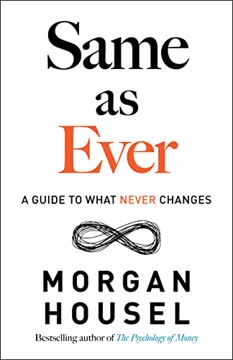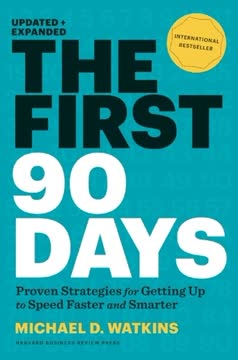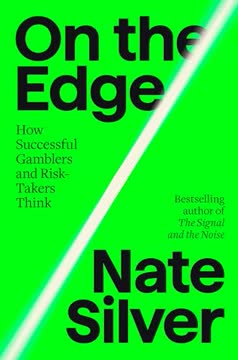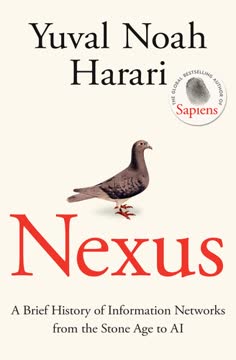가지 주요 요점
1. 혁신은 무작위적인 천재의 행위가 아닌 체계적인 과정이다
혁신은 기존 사업, 공공 서비스 기관, 또는 가정 주방에서 시작된 새로운 벤처에서든 기업가 정신의 특정 기능이다.
체계적인 접근: 혁신은 번개가 치기를 기다리는 것이 아니라, 의도적이고 체계적인 과정이다. 성공적인 기업가들은 이 체계적인 실천에 전념하며, 기업의 경제적 또는 사회적 잠재력에 변화를 일으킬 기회를 끊임없이 찾는다.
신화 깨기: "기업가적 성격"이라는 개념은 대부분 신화에 불과하다. 많은 성공적인 기업가들이 이 틀에 맞지 않으며, 반면에 소위 기업가적 특성을 가진 많은 사람들이 성공적으로 혁신하지 못한다. 혁신가들을 구별짓는 것은 그들의 체계적인 혁신 실천에 대한 헌신이다.
핵심 요소: 이 체계적인 접근은 다음을 포함한다:
- 기회를 찾기 위해 비즈니스 환경을 지속적으로 분석
- 아이디어를 평가하고 추구하는 구조화된 과정 개발
- 조직 내에서 혁신을 지원하고 육성하는 시스템 구축
- 혁신 노력을 정기적으로 측정하고 개선
2. 성공적인 혁신가는 체계적으로 일곱 가지 기회 원천을 분석한다
네 가지 기회 영역은 회사나 산업 내에 존재한다: 예상치 못한 사건, 불일치, 프로세스 필요성, 산업 및 시장 변화.
내부 기회: 회사나 산업 내에서 혁신가는 다음을 찾는다:
- 예상치 못한 사건: 기대와 다른 놀라움, 실패, 성공
- 불일치: 현실과 가정 사이의 불일치
- 프로세스 필요성: 기존 프로세스의 비효율성 또는 격차
- 산업 및 시장 변화: 산업 구조 또는 시장 역학의 변화
외부 기회: 더 넓은 환경에서 혁신가는 다음을 분석한다:
- 인구 통계 변화: 인구, 연령 분포, 교육 등의 변화
- 인식 변화: 사람들이 상황을 보는 방식과 해석
- 새로운 지식: 과학적, 기술적, 사회적 돌파구
이 일곱 가지 영역을 체계적으로 검토함으로써 혁신가는 다른 사람들이 놓칠 수 있는 가치 있는 기회를 식별할 가능성을 높인다. 이 구조화된 접근은 혁신을 우연한 활동에서 더 예측 가능하고 관리 가능한 과정으로 변환하는 데 도움을 준다.
3. 혁신은 개념적 및 지각적 기술을 필요로 한다
성공적인 혁신가는 두뇌의 좌우 양쪽을 모두 사용한다. 그들은 기회를 만족시키기 위해 혁신이 무엇이어야 하는지를 분석적으로 해결한 다음, 잠재 사용자들을 찾아 그들의 기대, 가치, 필요를 연구한다.
분석적 사고: 혁신가는 기회, 시장 조건, 잠재적 해결책을 엄격하게 분석해야 한다. 이는 다음을 포함한다:
- 데이터 수집 및 해석
- 패턴 및 트렌드 식별
- 아이디어의 실행 가능성과 잠재적 영향 평가
공감적 관찰: 사용자와 이해하고 연결하는 능력도 똑같이 중요하다. 이는 다음을 요구한다:
- 고객을 그들의 환경에서 직접 관찰
- 충족되지 않은 필요와 좌절을 발견하기 위해 적극적으로 경청
- 혁신 노력을 알리기 위해 통찰을 종합
균형 잡기: 가장 성공적인 혁신가는 이 두 접근법 사이에서 균형을 잡는다. 그들은 데이터를 사용하여 노력을 안내하지만, 직관과 공감을 통해 숨겨진 기회를 발견하고 진정으로 의미 있는 해결책을 만든다. 이러한 기술의 조합은 잠재적 혁신을 식별할 뿐만 아니라 사용자와 시장에 공감하는 방식으로 형성할 수 있게 한다.
4. 효과적인 혁신은 작고 집중적으로 시작된다
효과적인 혁신은 작게 시작된다. 그것들은 거창하지 않다. 그것은 전기 트램을 가능하게 한, 이동하는 차량이 레일을 따라 전력을 끌어올 수 있게 하는 혁신일 수 있다.
작게 시작: 일반적인 믿음과 달리, 가장 성공적인 혁신은 종종 특정 문제에 대한 소박하고 집중적인 해결책으로 시작된다. 이 접근법은 혁신가가 다음을 할 수 있게 한다:
- 최소한의 위험으로 아이디어를 테스트하고 개선
- 실제 피드백을 신속하게 수집
- 초기 결과를 바탕으로 반복하고 개선
명확한 초점: 효과적인 혁신은 여러 문제를 동시에 해결하려고 하기보다는 하나의 문제를 잘 해결한다. 이러한 목적의 명확성은 다음을 돕는다:
- 개발 및 구현 단순화
- 사용자에게 가치 제안을 명확하게 전달
- 혼란과 기능 과잉 방지
집중된 혁신의 예:
- 표준화된 수의 성냥이 들어 있는 성냥갑
- 전기 트램의 전력 공급 시스템
- 재배치 가능한 접착제를 가진 포스트잇 노트
작게 시작하고 레이저 초점을 유지함으로써 혁신가는 개발, 구현 및 확장이 더 쉬운 해결책을 만들 수 있다. 이 접근법은 또한 더 빠른 학습과 적응을 가능하게 하여 장기적인 성공 가능성을 높인다.
5. 혁신은 창의성이나 재능이 아닌 힘든 작업이다
무엇보다도, 혁신은 천재가 아닌 작업이다. 그것은 지식을 필요로 한다. 종종 기발한 발상을 필요로 한다. 그리고 집중을 필요로 한다.
천재 신화 깨기: 창의성과 재능이 역할을 하긴 하지만, 성공적인 혁신은 주로 헌신적이고 집중된 노력의 결과이다. 이 작업은 다음을 포함한다:
- 지속적인 학습 및 지식 습득
- 지속적인 문제 해결 및 실험
- 아이디어의 체계적인 실행
혁신 작업의 주요 구성 요소:
- 지식 수집: 산업 동향, 기술 발전 및 시장 역학에 대한 정보 유지
- 체계적인 분석: 기회와 잠재적 해결책을 엄격하게 검토
- 실험: 가설을 테스트하고 시행착오를 통해 아이디어를 개선
- 끈기: 좌절을 극복하고 도전에도 불구하고 계속 나아가기
집중된 노력: 혁신은 특정 영역이나 문제에 대한 지속적이고 의도적인 집중을 필요로 한다. 성공적인 혁신가는 일반적으로 잘 정의된 도메인 내에서 노력을 집중하여 깊은 전문 지식과 통찰력을 개발한다.
혁신을 천재의 번뜩임이 아닌 힘든 작업으로 인식함으로써, 조직은 지속적인 혁신 노력을 지원하는 시스템과 문화를 만들 수 있다. 이 관점은 끈기, 학습 및 지속적인 개선을 장려하여 장기적인 혁신 성공에 중요한 요소가 된다.
6. 기업은 혁신에 대한 금융 도구 편향을 극복해야 한다
우리는 이 용의자들에 대해 범죄를 주장한다: 할인된 현금 흐름(DCF) 및 순현재가치(NPV)를 사용하여 투자 기회를 평가하면 관리자가 혁신 투자에 따른 실제 수익과 이점을 과소평가하게 된다.
편향 인식: 일반적인 금융 도구와 지표는 다음과 같은 방식으로 혁신에 장벽을 만들 수 있다:
- 혁신 프로젝트의 장기적 잠재력을 과소평가
- 단기 재무 성과를 과도하게 강조
- 무행동 또는 느린 쇠퇴의 비용을 고려하지 않음
문제 있는 도구:
- 할인된 현금 흐름(DCF) 및 순현재가치(NPV): 미래 성장 잠재력과 혁신하지 않을 때의 비용을 고려하지 않아 혁신의 가치를 과소평가하는 경향이 있음
- 고정 및 매몰 비용 회계: 혁신 노력에서 신규 진입자보다 기존 기업에 불리하게 작용할 수 있음
- 단기 주당 순이익 강조: 장기 혁신 투자에서 자원을 분산시킴
편향 극복: 혁신을 지원하기 위해 기업은 다음을 해야 한다:
- 혁신 프로젝트의 잠재력을 더 잘 포착하는 대체 평가 방법 사용
- 즉각적인 재무 수익을 넘어 혁신의 전략적 가치를 고려
- 단기 성과와 장기 혁신 목표를 균형 있게 맞추는 지표 개발
- 혁신 평가에서 전통적인 금융 도구의 한계를 의사 결정자에게 교육
이러한 편향을 인식하고 해결함으로써, 기업은 혁신을 위한 더 지원적인 환경을 만들고 자원 할당 및 프로젝트 평가에 대한 더 정보에 입각한 결정을 내릴 수 있다.
7. 불확실한 벤처를 위한 발견 기반 계획이 중요하다
발견 기반 계획은 새로운 벤처를 위한 계획과 더 전통적인 사업 라인을 위한 계획의 차이를 인정하는 실용적인 도구이다.
불확실성에 적응: 전통적인 계획 방법은 높은 수준의 불확실성 때문에 혁신 벤처에 적용될 때 실패하는 경우가 많다. 발견 기반 계획은 다음을 통해 이를 해결한다:
- 가정을 사실이 아닌 테스트할 가설로 취급
- 과정 전반에 걸쳐 학습과 적응을 강조
- 프로젝트를 더 작고 테스트 가능한 마일스톤으로 나누기
발견 기반 계획의 주요 요소:
- 역수익표: 필요한 수익성에서 시작하여 역으로 작업
- 가상 운영 사양: 성공을 달성하기 위해 필요한 활동 세부 사항
- 가정 체크리스트: 주요 가정을 명시적으로 나열하고 추적
- 마일스톤 계획: 가정을 테스트하고 경로를 조정하기 위한 특정 이벤트 사용
이점:
- 초기 단계에서 중요한 가정을 발견하고 테스트하여 위험 감소
- 더 유연하고 적응 가능한 프로젝트 관리 가능
- 잠재적 함정과 기회를 더 빨리 식별
- 혁신 과정 전반에 걸쳐 더 정보에 입각한 의사 결정 지원
발견 기반 계획을 수용함으로써, 조직은 혁신 프로젝트에 내재된 불확실성을 더 잘 탐색하여 성공 가능성을 높이고 불필요한 위험과 투자를 최소화할 수 있다.
8. 혁신과 핵심 비즈니스의 균형이 장기적인 성공의 열쇠이다
현실은 혁신 이니셔티브가 적대감을 다리로 연결하는 파트너십에 의해 실행되어야 한다는 것이다. 이는 전담 팀과 지속적인 운영에서 우수성을 유지하는 단위인 성과 엔진 간의 파트너십이다.
긴장 관리: 성공적인 기업은 핵심 비즈니스(“성과 엔진”)의 요구와 혁신 이니셔티브의 요구를 균형 있게 맞춰야 한다. 이는 다음을 필요로 한다:
- 혁신 팀과 핵심 비즈니스 유닛 간의 구조화된 파트너십 생성
- 안정성과 변화를 모두 지원하는 시스템 개발
- 현재 운영과 미래 기회 간의 자원 할당 효과적으로 관리
핵심 전략:
- 전담 혁신 팀: 새로운 아이디어를 탐구할 자유를 가진 별도의 유닛 생성
- 교차 기능 협력: 혁신가와 핵심 비즈니스 전문가 간의 상호작용 장려
- 유연한 자원 할당: 혁신과 핵심 활동 간에 필요한 자원을 이동시키는 메커니즘 개발
- 양손잡이 리더십: 효율성과 혁신을 동시에 관리할 수 있는 리더 양성
도전 극복: 혁신과 핵심 비즈니스의 균형을 맞추는 데 일반적인 장애물은 다음을 포함한다:
- 혁신적 유닛과 전통적 유닛 간의 문화적 충돌
- 새로운 이니셔티브와 기존 운영 간의 자원 경쟁
- 장기 혁신 노력을 억제할 수 있는 단기 성과 압력
혁신 노력과 핵심 비즈니스 활동 간의 관계를 적극적으로 관리함으로써, 기업은 현재 성과와 미래 성장을 모두 지원하는 환경을 조성하여 장기적인 성공과 지속 가능성을 보장할 수 있다.
9. 조직 구조와 문화는 혁신 성공에 크게 영향을 미친다
기존 비즈니스 내에서 새로운 벤처가 시작될 때조차도, 두 계층의 기업 시민이 존재하면 문화 충돌이 계급 전쟁이 된다. 즉, 모든 재미를 누리는 사람들과 모든 돈을 버는 사람들이다.
구조적 고려사항: 조직의 구조는 혁신 노력을 지원하거나 방해할 수 있다. 주요 요소는 다음을 포함한다:
- 혁신 팀에 부여된 자율성의 정도
- 혁신 유닛과 핵심 비즈니스 간의 통합 메커니즘
- 의사 결정 과정 및 권한 할당
문화적 요소: 혁신 친화적인 문화는 다음과 같은 특징이 있다:
- 새로운 아이디어와 건설적인 비판에 대한 개방성
- 계산된 위험 감수와 실패에 대한 관용
- 지속적인 학습과 실험 강조
- 혁신적 행동을 지원하는 인식 및 보상 시스템
함정 피하기: 혁신에 대한 일반적인 조직적 장벽은 다음을 포함한다:
- 교차 기능 협력을 방해하는 사일로
- 의사 결정과 아이디어 흐름을 느리게 하는 경직된 계층 구조
- 실패를 처벌하는 위험 회피 문화
- 장기 혁신 노력을 약화시키는 단기 초점
혁신적인 조직 구축: 혁신을 촉진하기 위해 기업은 다음을 해야 한다:
- 빠른 실험과 학습을 허용하는 유연한 구조 생성
- 창의성과 계산된 위험 감수를 축하하는 문화를 개발
- 조직 전반에 걸쳐 지식과 아이디어를 공유하는 시스템 구현
- 혁신 목표와 일치하는 인센티브 및 성과 지표 정렬
조직 구조와 문화를 혁신을 지원하도록 의도적으로 형성함으로써, 기업은 새로운 아이디어가 번성하고 혁신적인 해결책이 더 잘 나타나고 성공할 가능성이 높은 환경을 만들 수 있다.
10. 혁신 팀은 강력한 리더십과 대인 관계 기술이 필요하다
대인 관계 기술에 주의를 기울이지 않고 소집된 그룹은 집단 목표를 수용하거나 다양한 구성원이 제공하는 다양한 강점을 활용하거나 혁신이 개발되는 동안 아직 형성되지 않고 문서화하기 어려운 암묵적 지식을 공유하기 어렵다.
기술적 전문성 이상: 기술적 기술이 중요하지만, 성공적인 혁신 팀은 강력한 대인 관계 및 리더십 능력을 가진 리더와 구성원이 필요하다. 이러한 기술은 다음에 중요하다:
- 효과적으로 협력할 수 있는 응집력 있는 팀 구축
- 혁신에 내재된 모호함과 불확실성 탐색
- 복잡한 아이디어를 전달하고 이해관계자의 동의를 확보
핵심 리더십 역량:
- 비전과 영감: 설득력 있는 미래를 설명하고 다른 사람을 동기 부여하는 능력
- 협력 및 팀 빌딩: 협력적인 환경을 조성하는 기술
- 적응력: 새로운 정보가 나타날 때 경로를 조정하는 유연성
- 의사소통: 다양한 청중에게 아이디어를 명확하게 전달하는 능력
- 갈등 해결: 팀 긴장을 건설적으로 해결하는 재능
팀 역학: 효과적인 혁신 팀은 다음과 같은 특징이 있다:
- 심리적 안전: 구성원이 위험을 감수하고 아이디어를 공유하는 데 편안함을 느낌
- 사고의 다양성: 다양한 관점과 기술 세트를 포함하는 팀
- 공유된 목적: 목표와 목적에 대한 명확한 정렬
- 지속적인 학습: 성장과 지식 공유에 대한 강조
기술적 전문성과 함께 리더십 및 대인 관계 기술을 우선시함으로써, 조직은 혁신 팀을 구축할 수 있다.
마지막 업데이트 날짜:
FAQ
What's "HBR's 10 Must Reads on Innovation" about?
- Definitive collection: The book is a curated collection of articles from the Harvard Business Review, focusing on innovation as a critical component for leadership and management success.
- Diverse topics: It covers a range of topics including change management, collaboration, communication, leadership, and strategic marketing, all through the lens of innovation.
- Practical insights: The book provides practical insights and strategies for both aspiring and experienced leaders to foster innovation within their organizations.
- Comprehensive guide: It serves as a comprehensive guide to understanding and implementing innovative practices in various business contexts.
Why should I read "HBR's 10 Must Reads on Innovation"?
- Essential for leaders: The book is essential for leaders who want to drive innovation and stay competitive in their industries.
- Expert insights: It offers insights from renowned experts and thought leaders in the field of innovation and business strategy.
- Actionable strategies: Readers will find actionable strategies and frameworks that can be applied to real-world business challenges.
- Broad applicability: The concepts discussed are applicable across different industries and organizational sizes, making it a versatile resource.
What are the key takeaways of "HBR's 10 Must Reads on Innovation"?
- Innovation is systematic: Innovation should be approached as a systematic process rather than relying on sporadic flashes of genius.
- Diverse sources of innovation: Opportunities for innovation can arise from unexpected occurrences, incongruities, process needs, and changes in industry or market structures.
- Importance of assumptions: Identifying and testing assumptions is crucial in the planning and execution of innovative ventures.
- Balancing risk and reward: Successful innovation requires balancing the risks and rewards, often through disciplined planning and strategic investment.
What are the best quotes from "HBR's 10 Must Reads on Innovation" and what do they mean?
- "Innovation is the specific function of entrepreneurship." This quote by Peter F. Drucker emphasizes that innovation is central to entrepreneurial success, whether in new ventures or established businesses.
- "Discovery-driven planning acknowledges that at the start of a new venture, little is known and much is assumed." This highlights the importance of adapting plans as new information becomes available, rather than sticking rigidly to initial assumptions.
- "The greatest praise an innovation can receive is for people to say, 'This is obvious! Why didn’t I think of it? It’s so simple!'" This underscores the value of simplicity and clarity in successful innovations.
- "The real measure of success is the number of experiments that can be crowded into 24 hours." This quote from Thomas Edison, as referenced in the book, illustrates the importance of rapid experimentation in the innovation process.
How does "HBR's 10 Must Reads on Innovation" define innovation?
- Purposeful change: Innovation is defined as the effort to create purposeful, focused change in an enterprise’s economic or social potential.
- Systematic practice: It involves a systematic practice of identifying opportunities and implementing changes that enhance value.
- Beyond products: Innovation is not limited to new products but includes processes, services, and business models.
- Driven by need: It is often driven by unmet needs or changes in market dynamics, requiring a proactive approach to identify and exploit opportunities.
What is "discovery-driven planning" as discussed in "HBR's 10 Must Reads on Innovation"?
- Reverse planning: Discovery-driven planning involves starting with the desired outcome and working backward to identify the necessary steps and assumptions.
- Assumption testing: It emphasizes the importance of identifying and testing assumptions throughout the venture's development.
- Milestone-based: The approach uses milestone events to test assumptions and adjust plans accordingly, minimizing risk and maximizing learning.
- Dynamic process: Unlike traditional planning, it is a dynamic process that adapts to new information and changing circumstances.
How does "HBR's 10 Must Reads on Innovation" suggest managing risk and reward in innovation?
- Risk matrix: The book introduces a risk matrix to assess the probability of success or failure based on familiarity with the market and technology.
- R-W-W screen: It recommends using the R-W-W (Real, Win, Worth it) screen to evaluate the feasibility and potential of innovation projects.
- Balanced portfolio: A balanced innovation portfolio should include a mix of incremental and major innovations to manage risk and reward effectively.
- Strategic alignment: Innovations should align with the company’s strategic goals and be evaluated for their potential to enhance competitive advantage.
What role do assumptions play in innovation according to "HBR's 10 Must Reads on Innovation"?
- Foundation of planning: Assumptions form the foundation of planning for new ventures and must be explicitly identified and tested.
- Potential pitfalls: Unchecked assumptions can lead to significant failures if they prove to be incorrect, as they often underpin critical business decisions.
- Checklist approach: The book advocates for a checklist approach to track and validate assumptions throughout the innovation process.
- Dynamic adjustment: As new information becomes available, assumptions should be revisited and adjusted to ensure the venture remains viable.
How does "HBR's 10 Must Reads on Innovation" address the challenges of innovation in established companies?
- Cultural barriers: Established companies often face cultural barriers that stifle innovation, such as resistance to change and risk aversion.
- Structural challenges: Organizational structures may need to be adjusted to facilitate innovation, such as creating cross-functional teams or dedicated innovation units.
- Resource allocation: Proper allocation of resources, including funding and talent, is crucial to support innovative initiatives.
- Leadership support: Strong leadership is needed to champion innovation and create an environment that encourages experimentation and learning.
What is the "innovation pyramid" concept in "HBR's 10 Must Reads on Innovation"?
- Three-tiered approach: The innovation pyramid consists of a few big bets at the top, a portfolio of promising midrange ideas, and a broad base of early-stage or incremental innovations.
- Balanced investment: It advocates for balanced investment across these tiers to ensure a steady flow of innovations and manage risk.
- Influence flow: Influence flows both ways in the pyramid, with big bets guiding smaller innovations and small wins potentially leading to major breakthroughs.
- Comprehensive strategy: This approach provides a comprehensive strategy for managing innovation across different levels of risk and potential impact.
How does "HBR's 10 Must Reads on Innovation" suggest fostering a culture of innovation?
- Encourage experimentation: A culture of innovation encourages experimentation and learning from failure, rather than punishing mistakes.
- Cross-functional collaboration: Promoting cross-functional collaboration and communication helps break down silos and fosters creative problem-solving.
- Leadership support: Leaders should actively support and participate in innovation efforts, providing resources and removing barriers.
- Recognition and rewards: Recognizing and rewarding innovative efforts can motivate employees and reinforce the importance of innovation within the organization.
What are the common myths of product development addressed in "HBR's 10 Must Reads on Innovation"?
- High utilization myth: The belief that high utilization of resources improves performance is debunked, as it often leads to delays and inefficiencies.
- Large batch myth: Processing work in large batches is not always more economical and can increase cycle times and reduce quality.
- Plan adherence myth: Strict adherence to development plans can stifle innovation, as flexibility is needed to adapt to new insights and changes.
- Feature overload myth: Adding more features does not necessarily increase customer satisfaction and can complicate the product unnecessarily.
리뷰
HBR's 10 Must Reads on Innovation은 평균 평점 3.79로 다양한 평가를 받고 있다. 독자들은 Peter Drucker와 Clayton Christensen 같은 저명한 저자들의 고전적인 기사 모음을 높이 평가한다. 많은 이들이 이 책의 내용이 혁신 구현을 이해하는 데 있어 비즈니스 리더들에게 통찰력 있고 유용하다고 생각한다. 그러나 일부는 책의 예시가 시대에 뒤떨어졌고, 비영어권 버전의 번역이 좋지 않다고 비판한다. 몇몇 리뷰어들은 특정 기사가 특히 가치 있다고 강조하는 반면, 다른 이들은 정보가 너무 일반적이거나 비즈니스 개념에 익숙하지 않은 사람들에게 더 적합하다고 느낀다.
Similar Books























